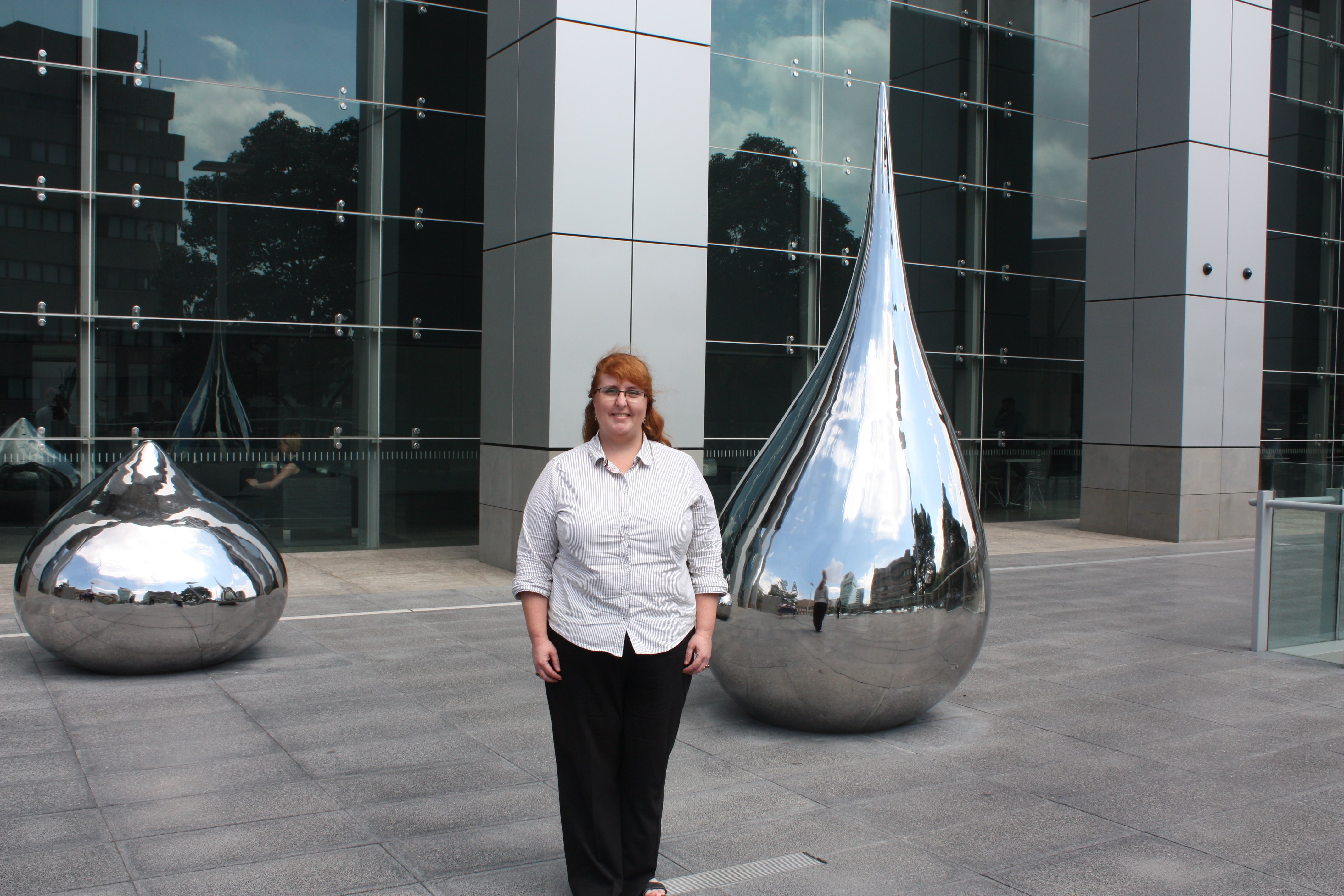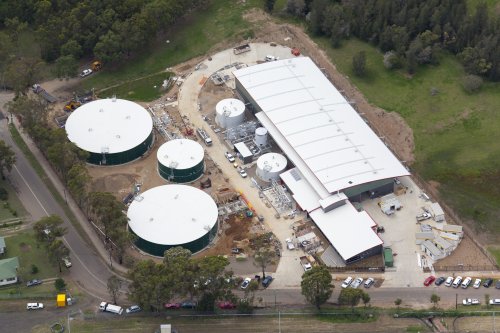Supplying Sydney’s water
Sustainability is ‘business as usual’ for the largest water utility in Australia, Sydney Water. The utility’s annual report defines sustainability according to seven corporate goals based on social, economic and environmental aspects and it’s now being mapped to the UN Global Reporting Initiative (GRI) reporting framework. Nefley Hetherington*, Strategic Directions Manager, Sustainability Division at Sydney Water, talks about the utility’s achievements and visions for the future.
One of Sydney Water’s key achievements under the 2006 and 2010 Metropolitan Water Plan has been to diversify supply and reduce demand. From both rainfall-dependent and rainfall-independent sources, we definitely have more than enough water to cope with future droughts and population growth till at least the mid-20s.
One important reason for this was the strategic decision to build the desalination plant. Dams had reached a critical level and the reason for going with desalination was that it was comparatively quick to get a good supply going. It’s now in a two-year proving period and in the future will be turned on when total storage levels drop to 70% and will be turned off at 80%. Of course as soon as we signed the contract, the rainfall graph shot up, but having said that, we’re currently below 70% and this storage can drop rapidly due to our variable climate.
The reverse osmosis desalination process is energy intensive, so this is why 67 wind turbines were installed outside Bungendore, in NSW, to power the plant. These have actually managed to increase the availability of green energy to the grid by 700%.
Water efficiency
Water Fix has been the single most effective water-efficiency program Sydney Water has initiated. It’s very simple: we organised for plumbers to go into houses and change shower heads, install aerators in taps and fix any minor leaks. The real bonus of this program came from the energy savings achieved from reducing hot water consumption in the shower.
As far as volumes of savings go, individual businesses have been achieving some enormous reductions in water. For example, Cumberland golf course saved around 82% of its water consumption just by changing its irrigation regime.
Our business programs work one on one with each customer to identify the best way for them and us to work. The first step is often to put in water meters, as you can’t manage what you can’t measure. When Cadbury Schweppes and Coca-Cola Amatil used the program, they reviewed their water-intensive bottling technique. They both switched to water conveyor lubricants in their bottling plants, which achieved millions of litres in annual water savings.
Every business has different requirements; this is why the one-on-one approach has worked so well. For example, in a food manufacturing plant it’s tricky to use recycled water because there are hygiene and safety issues. We have developed best practice guidelines for certain types of businesses - such as clubs and hotels - and these have proved to be very useful. The businesses can just implement them themselves by using the guidelines and they also include a series of questions at the end to help maintain the solutions implemented. The core to the programs is not just the technology, it’s the change in the cultural commitment that counts also.
Recycled water targets
Our latest development at Rosehill - Camellia Recycled Water Scheme (set to commence operation in mid-2011) - is helping to achieve our target of 12% recycled water by 2015. The exciting thing about this project is that it’s slap bang in the middle of the city, which I think is an Australian first for such a development. The plant is receiving secondary treated feed water from the Liverpool to Ashfield pipeline, which makes the next treatment phase of recycling the water less expensive. Seven foundation industrial and commercial businesses, including Visy and the Rosehill racecourse, are involved with the privately run (AquaNet Sydney and Veolia Water) project. However, what really makes the project cost sensible is that the area along Parramatta Road is up for development, which can help expand the development to include other businesses.
|
|
Sewer mining is another technique that is proving successful, but is not always suitable. Industry often needs highly treated water (distilled water) to operate and this makes water treatment expensive; whereas, for a golf club this is a good option. A number of golf clubs are sitting right above the sewer line (for example, Pennant Hills, Gordon and Beverley Park) and they tap into this supply, treat it on site and then use it for irrigation. As water is so heavy (one cubic metre weighs a tonne), negating the transport cost of the water makes these projects economical.
There are still a number of regulations surrounding these private enterprise solutions and it does become expensive when the recycled water is on-sold and a Water Industry Competition Act (WICA) licence is required. The act was originally set up to enable large-scale independent water recycling operations to compete with Sydney Water; however, it’s actually smaller scale operations that are finding the cost of such a licence a deterrent. The government is working on this but it is a difficult process as you have to get the balance right because you’re protecting human health and we don’t want anything to fall through the cracks.
Leaks - water not wiki
Sydney Water is at the top of the A ranking (A1) according the World Bank International Leakage Index (ILI), which we are very proud of. The global index factors in length of pipes, age of pipes, nature of soil in different locations, all of which can affect leakage rates. London has a high factor because of the age of the pipes; however, Thames Water is doing some fantastic work to try and fix this. Singapore, on the other hand, is virtually a brand new set-up and has sandy soils so the pipes hardly move - so they have very low leakage rates.
When it comes to leaks, it’s not the big spouting leaks that cause the problems, it’s the slow leaks. Sydney Water’s Active Leak Detection program has found great success using acoustic technology and has managed to reduce water leakages and losses by around 35%. This doesn’t mean that we stop looking for new technology. We are currently trialling a technology from an Israeli company that uses a mathematical modelling technique which could save on the costs associated with workers out in the field. It’s proving interesting and it is very effective in Jerusalem but it does rely on having a more detailed meter system than is currently available in the Sydney area. This doesn’t rule this technology out completely; we now have to weigh up whether it is worthwhile to install more meter points.
Water pressure is another major component of the leakage program. The normal pressure is around 15 m head but in some areas of Sydney it is around 200+ m head. There are around 45 pressure zones throughout the Sydney area where we have been trying to solve this problem by installing valves to ease the pressure. Of course, some business customers need this high pressure so we have had to work around these needs. But for the average household, this high pressure is unnecessary and needs to be corrected by installing a valve point to reduce the pressure and ease the risk of leaks.
Climate change
We are always reviewing our contingency plans and learning lessons from the past. The industry is very good at sharing knowledge across the globe. We did review some procedures after the recent floods in Newcastle and the Victorian bushfires where the quality of water run-off and electricity being out was a problem.
By mapping out a number of ways to reduce our energy consumption, we are planning to reduce emissions and become carbon neutral for our operations by 2020. Firstly, implementing those systems that give us payback makes sense as it saves us money. We have identified three mini hydro opportunities – at a sewage treatment plant and along two water pipelines. Energy is captured from water drops at these locations - it’s nothing like the scale of the Snowy Mountains Scheme, but it’s providing good results. Cogeneration technology where methane is captured at our largest wastewater treatment plants is also allowing us to generate 22% of our energy needs; and the Water Fix program has resulted in us acquiring NSW Greenhouse Gas Abatement Certificates, and we plan to keep these certificates rather than selling them as another means of abatement.
Future technologies
With any new technology, we have to consider the costs, the reliability, meeting the regulator’s standards and community concerns. The water industry is a very mature business and it doesn’t change rapidly like the IT industry. There tends to be incremental improvements on technology or variations in technology. For example, the plant in this office building (5-star-rated One Smith Street, Parramatta) is really just a compressed version of a number of technologies we provide in the broader sector. Continuous improvements mean you get quite a long way down the track without even realising it.
Currently there is a trend for decentralised systems in small villages; however, they are more expensive and energy intensive than a centralised system. There will always be the niche developments for those who can afford to do more. For example, Barangaroo (East Darling Harbour) wants to be water positive and energy neutral and I’m curious to see how they can do both. The niche developments will exist but they won’t be the majority.
Sydney Water is also looking at wind power. It’s getting to a point where it might be possible to put wind turbines onto a site. There are community concerns but we are currently looking at this in more detail. We don’t think solar will be brilliantly useful for us in the short term.
With around 70% of our water consumption coming from residential use, how people use their water in their homes is going to have a dramatic impact on demand. Over time, the water sustainability programs that will work are the ones where the consumer doesn’t have to choose or maintain a behaviour. These are the guaranteed ways to save water into the future.
 *Nefley Hetherington is Sydney Water’s Strategic Directions Manager, Sustainability Division, responsible for the long-term planning for the provision of its products and services, including water efficiency. Commencing in 2005, during the middle of Sydney’s worst drought on record, her main areas of work were largely prompted by the need to respond to drought and focused on projects relating to recycling and water conservation. She has also played a significant role in the interagency review and development of the 2006 and 2010 versions of the Metropolitan Water Plan, which ensures that Sydney will have a secure water supply to meet future needs of the community and protect river health.
*Nefley Hetherington is Sydney Water’s Strategic Directions Manager, Sustainability Division, responsible for the long-term planning for the provision of its products and services, including water efficiency. Commencing in 2005, during the middle of Sydney’s worst drought on record, her main areas of work were largely prompted by the need to respond to drought and focused on projects relating to recycling and water conservation. She has also played a significant role in the interagency review and development of the 2006 and 2010 versions of the Metropolitan Water Plan, which ensures that Sydney will have a secure water supply to meet future needs of the community and protect river health.
Sustainability in 2026: what's next for Australian businesses?
No longer is it just about reporting; it's about using these frameworks to drive meaningful...
Net zero or 1.2 million homes: trade-off or win-win?
The housing accord's ambitious goal of building 1.2 million homes by June 2029 could impact...
How mandatory climate reporting is raising the bar for corporate leadership
The shift towards mandatory climate-related financial disclosures is transforming how...








